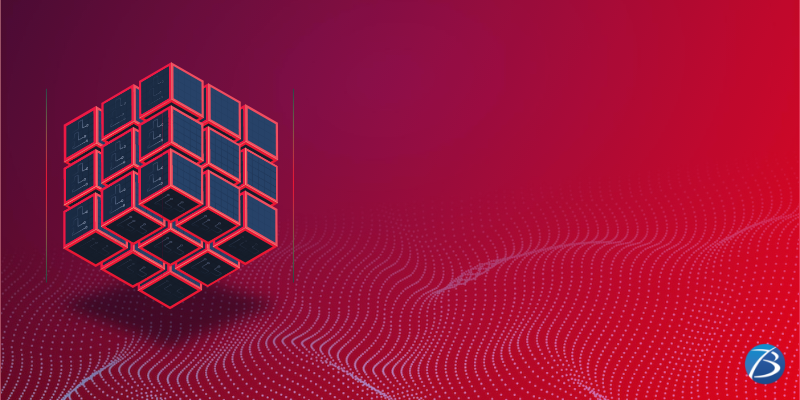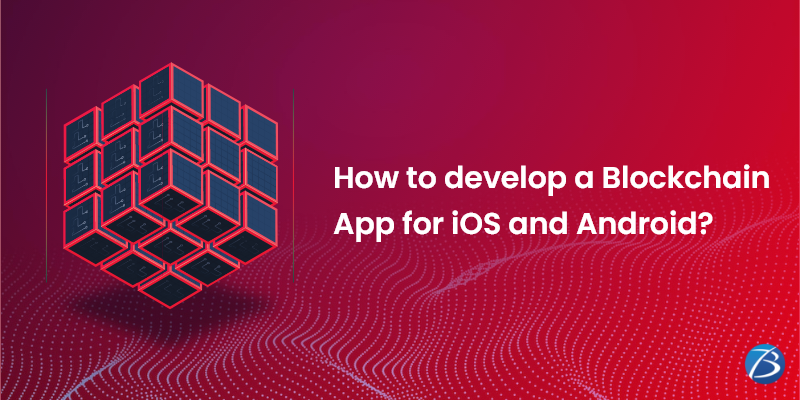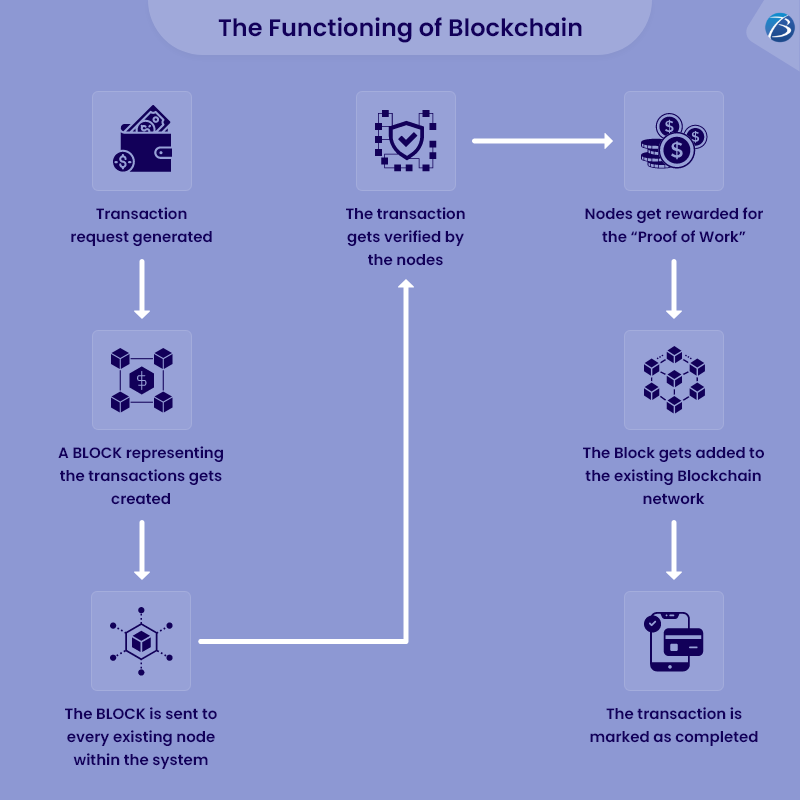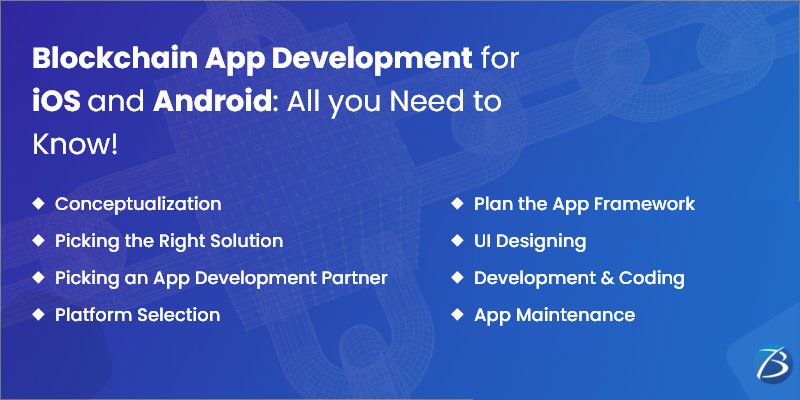How Blockchain Technology Affects Mobile Application Development Experience
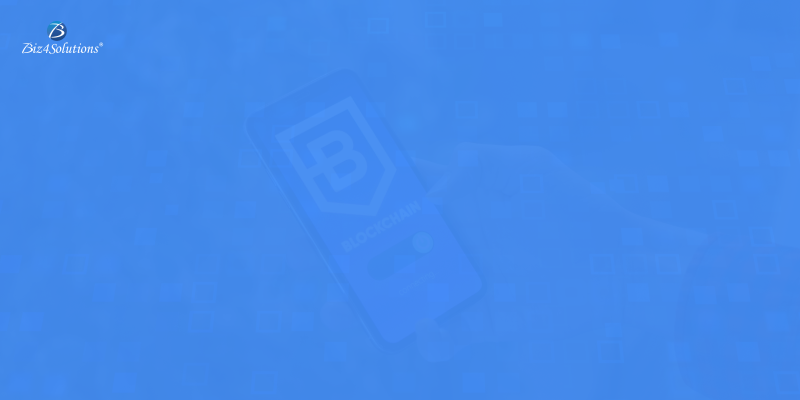
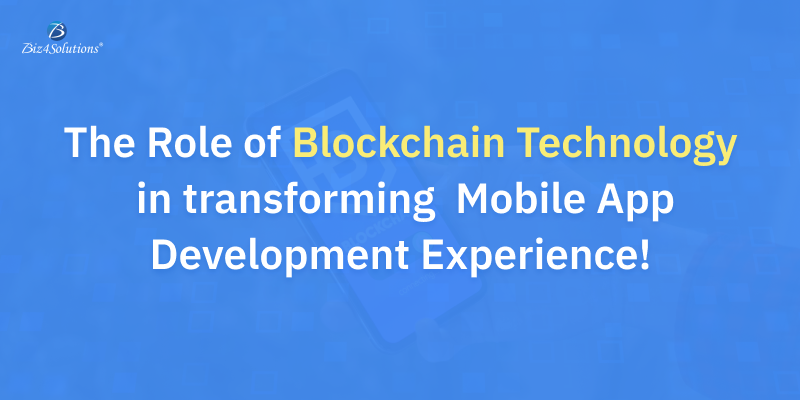
All industries across the globe are transforming to go automatic or semiautomatic with sophisticated business processes. The fast-paced progression toward the digital economy involves the internet as the core component. In this transformation, the centralized manual systems have emerged as a bottleneck. Blockchain technology has significantly helped to process this transition. Its first generation introduced Cryptocurrency with limited applications. With the second generation, many use cases of Blockchain app development including smart contracts came into the picture. Mobile application development is also amongst the popular use cases of Blockchain technology. This article will give an insight into Blockchain, its features, and the ways it’s benefiting the application development experience.
What is Blockchain?
Blockchain has emerged as one of the most promising technologies with a significant impact on the operations and future of any industry. Blockchain can be said to be a public ledger where all the transactions are securely recorded in blocks that grow in a chain with new blocks being added in a time-stamped manner. Blockchain has many technical aspects such as distributed consensus algorithm and asymmetric cryptography to ensure the security of the data stored in the blocks. Blockchain solutions have gained prominence in financial services owing to the non-intervention of any intermediary.
What Makes Blockchain Unique and Important?
Blockchain comes with a set of features that make it unique and robust to be used across different industries and use cases. A crisp detailing of the features is listed below:
1. Distributed ledger
Blockchain works on a distributed ledger system wherein all the information is shared with all the participants of the Blockchain, which is then approved by them without the dependency or intervention of any centralized authority. The failure of any one node does not affect the operation of any other node.
2. Chronology
The blocks in the Blockchain serve as the repository of all the information related to the interactions. The blocks are time-stamped and connected chronologically in a chain.
3. Consensus-based
Blockchain follows consensus-based rules where any transaction needs to be unanimously approved by all the participants for it to take place.
4. Cryptographic security
Every piece of information is cryptographically sealed ensuring that none of the information can be edited or deleted. The data stored in the Blockchain is immutable and cannot be retrieved with false means after the failure of any one node.
5. Digital
Being a digital system is of paramount importance as it eliminates the need for any physical asset vulnerable to theft and damage, further ensuring the security of the blocks.
Application Development
Application development has become a necessity for any organization keen to establish an online presence. Blockchain app development has emerged as a trend. Organizations are hiring Blockchain developers to build apps that serve their purpose. However, hiring blockchain app developers does not signify the development of a Blockchain solution. Trends are changing and people are hiring Blockchain application development services to enhance their app development experience. To understand the impact of Blockchain technology on mobile app development, we must know of the challenges faced during application development.
Challenges in Application Development
1. Security
Insecure data storage is one of the major challenges in application development. The data stored on the cloud or physical local systems are susceptible to data loss and damage. An insecure environment calls for robust security measures.
2. Cross-browser compatibility
The aim to penetrate deeper into the demographics has compelled every organization to develop versatile applications that run on maximum browsers and remote devices.
3. Multi-technology support
Any application involves various components such as front-end development, backend development, and UI creation for which many technologies are brought into one platform. This increases the complexity of code, making coordination and scalability very challenging.
4. Debugging
The numerous technologies involved in application development give rise to bugs which prove to be challenging for the application developers.
5. Difficult management
From development languages, and debugging, to security tools, the application development process includes many difficult-to-use tools. An app developer can end up wasting time learning these tools without even exploiting them in the best way.
How Blockchain Technology Enhances the Application Development Experience?
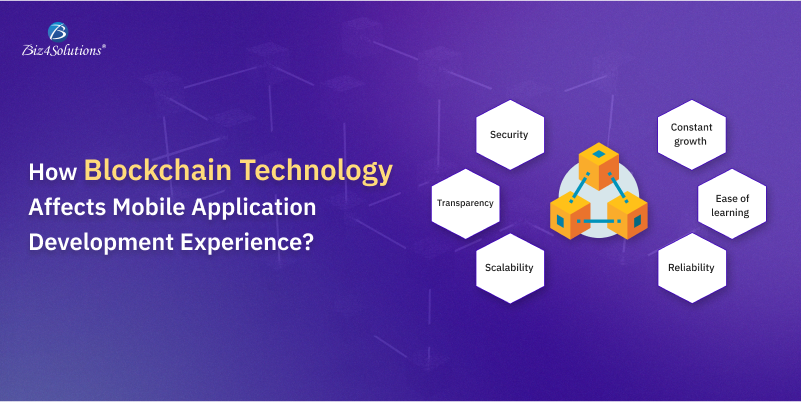
Blockchain app development has sneaked into the application development ecosystem over its features that enable app developers to tackle challenges and develop apps more effectively. Here is a list of ways Blockchain enhances the application development experience.
1. Security
The road to application development involves the accumulation of user data which is used to serve business goals. The massive amount of data collected and generated often deal with incompetent security implementations that give in to cyber threats. Organizations are finding a robust security mechanism in Blockchain solutions. They are hiring Blockchain app developers to take advantage of the decentralized architecture of Blockchain technology and enhance data security. The encryption and validation facilities offered by Blockchain technology encourage the application developer to integrate different financial services, opening a wider path of income for the application owner. The decentralized structure and consensus system make it a robust solution. Organizations are even seeking private Blockchain solutions to limit user access and make the app more secure. Blockchain solutions are being used for user identification, data encryption, and limiting interruption by third-party apps.
2. Transparency
The conventional ways of applying methods of manual labor to bring every stakeholder on the same platform can be effectively replaced by applying Blockchain technology. A Blockchain solution applies the consensus method to the application development process wherein every stakeholder gets updates on all the changes. The secure authorization process ensures that only authorized people can access the application, get updates, and make changes.
3. Scalability
The scalability of an application is related to traffic and data consumption. Higher traffic will raise complexities in management and security. Large amount of data can be stored in the blocks of the Blockchain linearly with traced chronology. Higher security and better data management offered by Blockchain solutions have increased their demand amongst application developers. The application developers are leveraging the rich feature set of Blockchain to integrate solutions for financial transactions, crafting a scalable and flexible platform for a larger audience.
4. Reliability
Higher security fetches a sense of reliability and trust from the users. Blockchain operates on a private and public key mechanism where every user accessing the application and its important functionalities need to produce the private key in combination with the public key. These security features make Blockchain solutions beneficial to application development across a wide range of sectors including finance, retail, and medical sectors.
The consensus mechanism of Blockchain technology highlights any fraudulent practice. Blockchain app development yields a very robust solution, ready to scale without compromising security.
5. Ease of learning
Organizations can hire Blockchain developers to implement every kind of Blockchain solution. But is this the end? The application developers need to understand the basics of a Blockchain solution and the technology itself to utilize it to the fullest. However, integrating the blockchain solution in the application development process is fairly easy, unlike the popular belief that Blockchain is very complex. The application developers can easily understand Blockchain technology to productively apply it in the development process.
6. Constant growth
Blockchain technology is expected to grow with time. Reports suggest that the evolution of the Blockchain market will be about $20 million by the end of 2024. Organizations and institutions are progressively adopting it. About 69% of banks are already using Blockchain technology. This progress and updates speak on behalf of its promising future. The application developers can include Blockchain solutions in their application development process without any hesitation. More updates in Blockchain app development will ensure better offerings to the application development process, significantly benefitting the development process in multiple ways.
How to Implement Blockchain in Your App?
The efficiency of Blockchain applications doesn’t ensure their applicability in every situation. Every organization seeking Blockchain solutions should keep the following steps in their mind.
1. Find out the applicability of Blockchain technology
Blockchain is a sophisticated technology meant to boost the performance of mobile applications. The right application of the technology will help you gain maximum benefits from it. Scan through the requirements and use cases of the application to chalk out the ways of implementing the Blockchain solution. eCommerce apps, banking apps, and other applications involving financial transactions and apps handling important financial details of the users can implement Blockchain solutions in their apps.
2. Hire resources
Once you decide on implementing a Blockchain solution, you can start connecting with the right talent. You can hire Blockchain developers for the same. Hiring a Blockchain application Development Company is another great option. This way, you can avoid interacting with and assessing Blockchain developers.
3. Devise an implementation solution
With Blockchain experts on board, you can devise an implementation strategy. This strategy should include a list of compatible features, market trends, competition analysis business goals, and other aspects that matter to your business.
4. Final implementation
Find out the Blockchain development platform that works for you and start the development. The developers can take a proof of concept approach while application development for creating a robust ecosystem for the testing. Test the application after development and release when the application comes up as desired.
Conclusion
A range of industries from finance to real estate is using Blockchain technology to safeguard user data. With the rise in cybercrimes, we need an authentic solution like Blockchain. It offers multiple benefits to mobile application developers and enhances their application development experience. Blockchain-powered apps are secure, scalable, flexible, and robust. Get in touch with a proficient Blockchain app development company to integrate Blockchain into your apps.
If you are planning to build a Blockchain solution, it’s advisable to partner with a Blockchain app development company that can help you define the Blockchain implementation strategy and guide you execute your application development process.

